2017-07-07
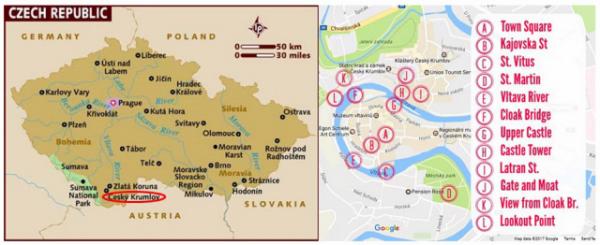
【Aiden in English】
The Czech Republic, also known as Czechia, was previously known as Czechoslovakia, and before that, as the Bohemian Kingdom. It is a fascinating country, to put it mildly. Its numbers run along the same lines as Austria regarding population and area, but everything else couldn't be more drastic. The people, culture, and religion all have their differences, and today's trip to Český Krumlov, a small medieval town, demonstrates this contrast. So why does the Czech Republic contrast so much with its neighbors? Surprisingly, it was all related to recent history. World War II had a profound impact on many countries, but perhaps none more so than the Czech Republic. Adolf Hitler, assuming command of Germany, was granted ownership of some regions of Czech. He drove out a lot of the natives and gave the land to the Germans. At the time, most of the Czech lands were populated by Germans. Hitler gave them control, harshly punishing the Czechs. After the war, the Czechs reciprocated by removing most Germans from their borders. Therefore, much of the country nowadays is non-German. Furthermore, the Czech Republic closed its borders for half a century after WWII because of its position behind the Iron Curtain. Finally, they separated from Slovakia in 1992, resulting in another cultural split. For these reasons, the Czech Republic stands out quite distinctly from its other neighbors. However, it brews and drinks beer at an astonishing rate, much like its neighbors, leading the world in beer consumption. According to the locals, beer is water, not alcohol, which, to some extent, is true. In most places, beer is cheaper than water, encouraging more consumption. The average beer consumed in a day is over 0.4 liters/13.5 fl oz, and that includes underage children and babies. All of this was on display at Česky Krumlov. This fairytale town is quite delicate, with a minuscule population of thirteen thousand. However, it's the tourists who dominate the narrow, commercialized streets. And cars. Why are cars allowed on cobble, narrow pedestrian lanes filled with people, pets, and street vendors? I don't know. Regardless, tourism is the town's core. At the town center lies a hill with Český Krumlov Castle. The 13th-century castle has recently been restored in Gothic, Renaissance, and Baroque styles. It is a typical European castle with battlements, living quarters, and a central tower. However, the view from various angles of the town was spectacular. Walking down the hill, I saw many tourist attractions at play, like pretty souvenir shops and numerous street-side musicians. This highlighted the area's dependence on tourism. The Vltava River wrapped around the old town and provided sections for Mom and me to step back in time to medieval times. Honestly, Česky Krumlov at least requires a good day to explore. An interesting item we could've explored further was the food and drink, as we only tried a single street snack called Trdelník. Rabbit, oddly, seemed to be a traditional dish, but outside of fine dining, there was much to try and only so little time. Česky Krumlov is the only town we will be stopping at within the Czech Republic this time, unfortunately. It, however, has shown the differences between the rest of our itinerary by a single tour in the past five centuries. Yet there is still much to see in Czech, so I may return to discover more of this small country. 【红霞译文】
捷克共和国亦即捷克,以前又被称作捷克斯洛伐克,古时还曾叫波希米亚“牧民家园”王国,起码算得上可以大谈特谈的国家,其人口密度和国土面积跟奥地利差不多,但在其它方面却没什么可比性,毕竟民族、文化、宗教渊源迥异,今天中世纪古城蜿蜒草甸城之旅足以让我们感受到不同之处。
那么到底为什么捷克卓尔不群呢?岂料所有一切均与近代历史密切相关,真让人跌破眼镜。第二次世界大战波及到很多国家,但几乎没有一个民族遭遇像捷克那样,身为德国最高统帅的阿道夫·希特勒将捷克某些地区划为己有,肆意驱逐当地民众,强行把土地分给德国佬,那时日尔曼后裔实际上遍布捷克扎根落户,希特勒让他们作威作福,残酷压迫捷克人,致使战后捷克人以牙还牙,统统将德国佬赶回老家,因此如今在捷克德国佬所剩无几,再加上二战后时处铁幕背面的捷克闭关自守与所在的周边西方世界隔绝长达半个世纪之久,1992年捷克和斯洛伐克终于分道扬镳,导致两种文化彻底决裂。
正是基于以上原因,捷克共和国才与邻邦各国存有天壤之别。然而,捷克乐衷酿造酷爱啤酒,其疯狂劲头令世人刮目相看,较啤酒国度有过之而无不及,难怪它独居世界啤酒消费榜首,当地老百姓语不惊人死不休,宣称啤酒是水而非酒类产品,从某个角度而言不无道理;啤酒在捷克国内很多地方确实比水还要便宜,变相刺激更多消费。有数据显示,捷克啤酒日均消耗量近乎400毫升即13.5液体盎司,其中包括未成年子女和吃奶婴儿。
所有一切全部通过蜿蜒草甸城再现出来,这个童话般古城小巧玲珑,本土人口不足十三万而已,倒是各方游客遍及大街小巷,车辆川流不息,为啥竟允许汽车在万头攒动宠物横行店铺当道的鹅卵石狭窄人行胡同里来回穿梭?对之我一头雾水。不管怎样,当地旅游业兴旺发达,城中心山丘上矗立着蜿蜒草甸城堡,最近已修缮一新,重新恢复文艺复兴、哥特及巴洛克式原有风貌,它是一座典型的欧洲城堡,城垛、住宅、主塔一应俱全,从城区不同角度观看景色极为壮观。我们从山上拾级而下,眼花缭乱的靓丽画面连同漂亮讲究的礼品商店及文武双全的街头艺人构成了一道道风景线,由此表明当地生活与旅游业唇齿相依;伏尔塔瓦河环绕古城,我和妈妈漫步其中仿佛时光穿越到中世纪年代。坦率地说,来蜿蜒草甸古城游玩至少要豪掷一两天时间,这样可以仔细品味餐饮小吃,可惜我们只尝过一种叫“烤面包卷”的点心,不无奇葩的是兔肉俨然成为传统食谱,当然除了享用美食之外,还有很多生活值得体验,但苦于时间有限只好作罢。 可惜蜿蜒草甸城是我们出游捷克共和国唯一驻足的地方,要不是它多方位诠释了过去五个世纪别具一格的风土人情,心中难免有些遗憾,由此说来捷克当该多加了解,期待有朝一日我会再来发掘这块宝地。 Today in History(历史上的今天):
2017: Linz, the Hitler Youthhood AUT(奥地利林茨·希特勒青少年生活地) 2017: Cesky Krumlov, the Cobbled Charms(捷克克鲁姆洛夫·卵石幽径)
2017: Cesky Krumlov the Jewel of Bohemia(捷克克鲁姆洛夫·牧民之家瑰宝) 2016: The British Isles via Kirkwall(途径柯克沃尔环游英伦三岛)
2016: New vs. Old Cruise, UK(英国·新旧游轮对比) 2014: First Day of YMCA Soccer Camp(基督教青年会营足球营第一天) 2012: Stage Taste(演戏兴趣) 2011: Drama-Sports Camp-3(文体营之三) 2011: 业余活动(Extracurricular Activities) 2010: 讨价还价外传(Another Bargain) 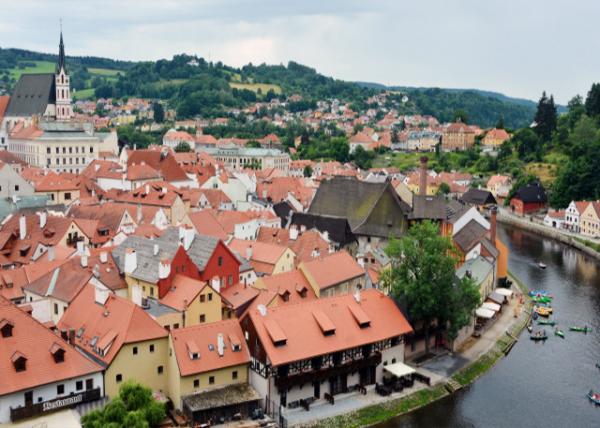 Historic Ctr of Krumlov @ the Banks of Vltava River Historic Ctr of Krumlov @ the Banks of Vltava River
(激流河畔蜿蜒草甸城历史中心) 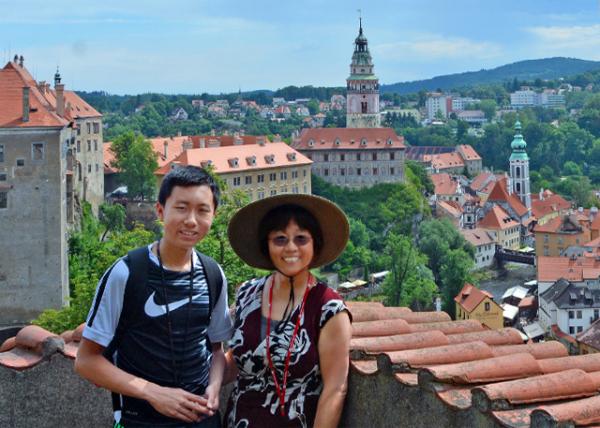 Krumlov Castle Tower (蜿蜒草甸城堡 07-11-2017) Krumlov Castle Tower (蜿蜒草甸城堡 07-11-2017)
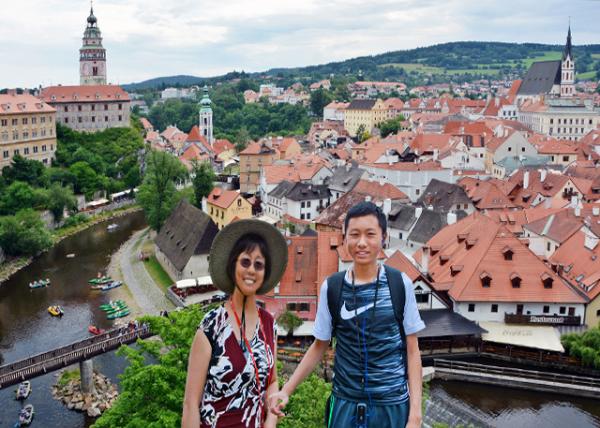 Krumlov Castle Towering over the Vltava Krumlov Castle Towering over the Vltava
(耸立在激流河上的蜿蜒草甸城堡 07-11-2017
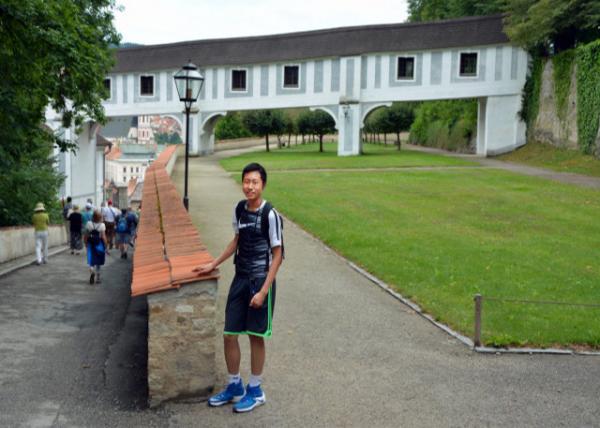 Connecting Corridor @ Krumlov Castle Connecting Corridor @ Krumlov Castle
(蜿蜒草甸城堡·连接廊桥 07-07-2017) 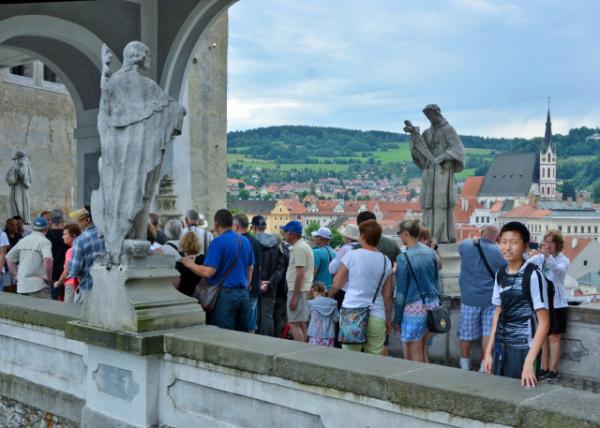 Stone Bridge @ Krumlov Castle Stone Bridge @ Krumlov Castle
(蜿蜒草甸城堡·石桥 07-07-2017)
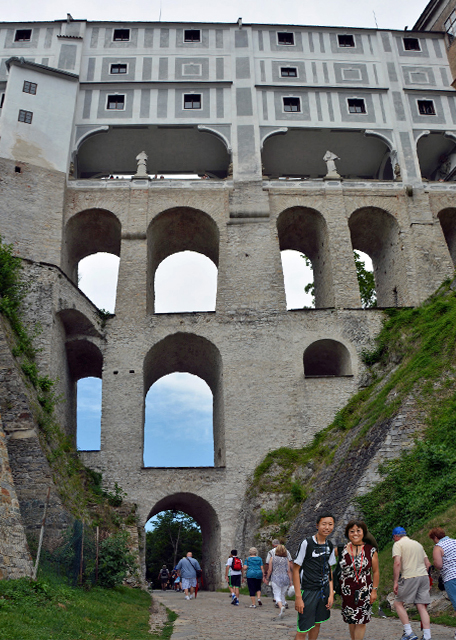
Cloak Bridge of Krumlov Castle
(蜿蜒草甸城堡·斗篷桥 07-07-2017) 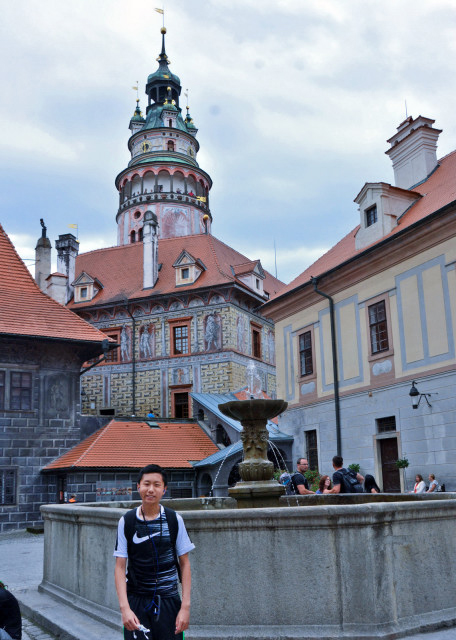
Stone Fountain in the 1st Courtyard State Castle & Chateau Česky Krumlov (国家城堡和蜿蜒草甸城乡间别墅·第一庭院石喷泉 07-07-2017) 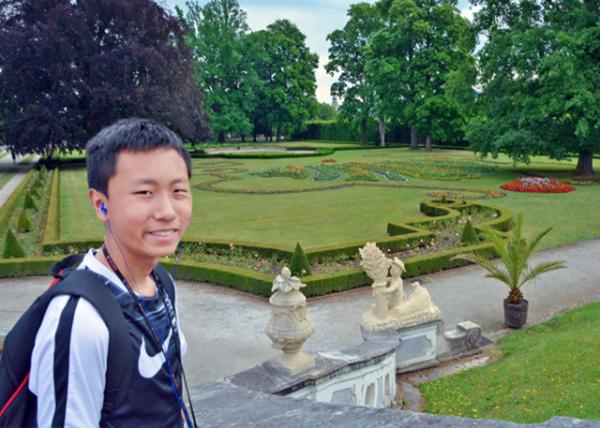 Castle Gardens (城堡花园 07-07-2017) Castle Gardens (城堡花园 07-07-2017)
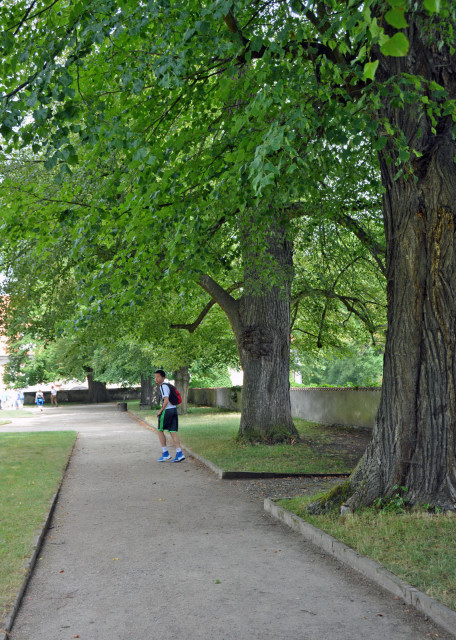
Natl Tree Small-leaved Linden @ Castle Gardens (城堡花园·国树小叶菩提树 07-07-2017) 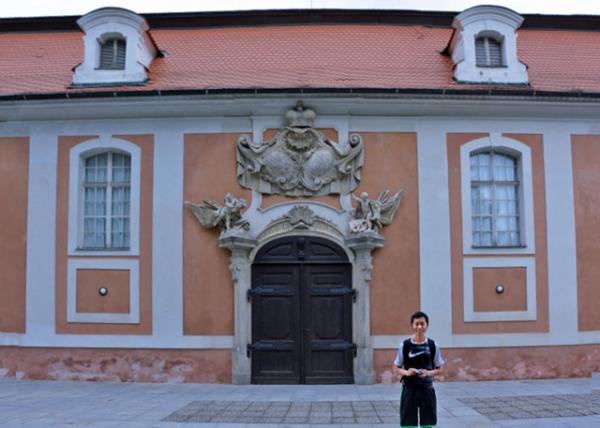 Riding School @ Castle Gardens Riding School @ Castle Gardens
(城堡花园·骑术学校 07-07-2017) 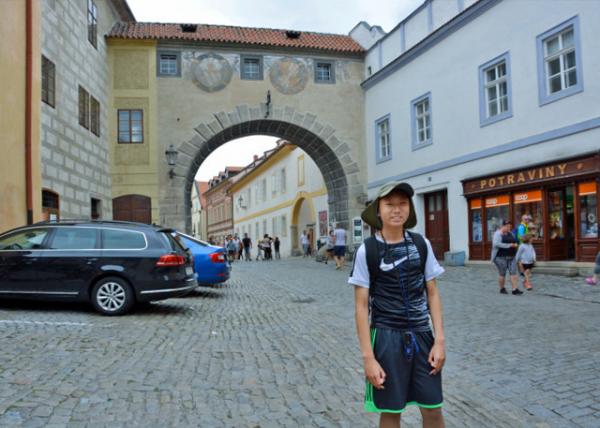 Latrán Arch (侧拱门 07-07-2017) Latrán Arch (侧拱门 07-07-2017)
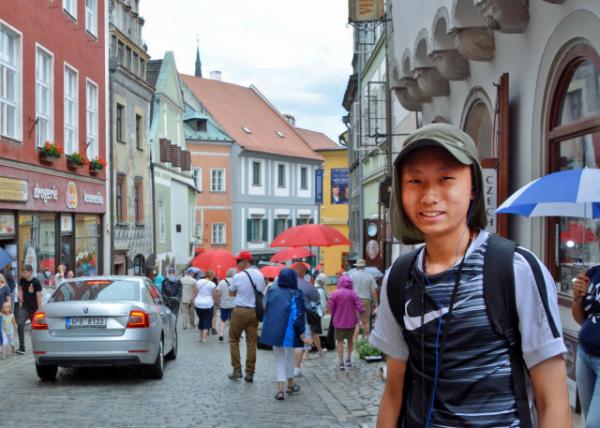 Cobblestone St (鹅卵石街道 07-07-2017) Cobblestone St (鹅卵石街道 07-07-2017)
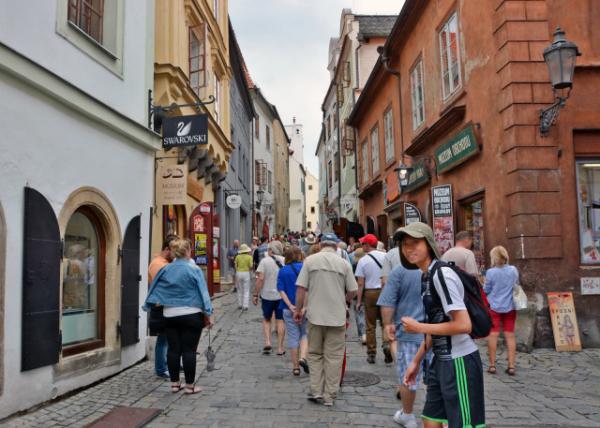 Latrán Cobblestone Alley (侧拱门鹅卵石巷 07-07-2017) Latrán Cobblestone Alley (侧拱门鹅卵石巷 07-07-2017)
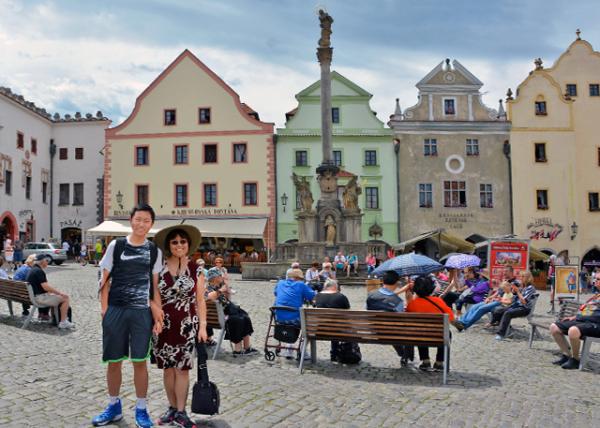 Namesti Svornosti (联合广场 07-07-2017) Namesti Svornosti (联合广场 07-07-2017)
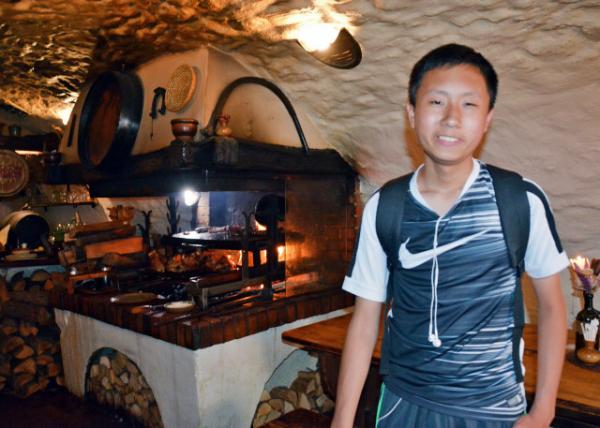 Tavern in Šatlavská Street (监狱街酒馆 07-07-2017) Tavern in Šatlavská Street (监狱街酒馆 07-07-2017)
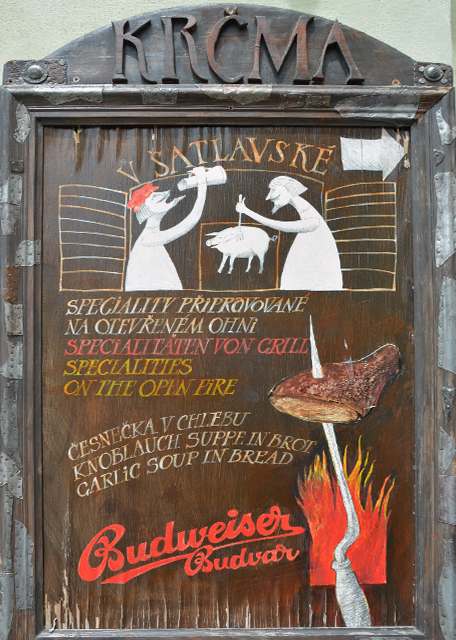
Plaque of Tavern in Šatlavská Street (监狱街酒馆·店匾) 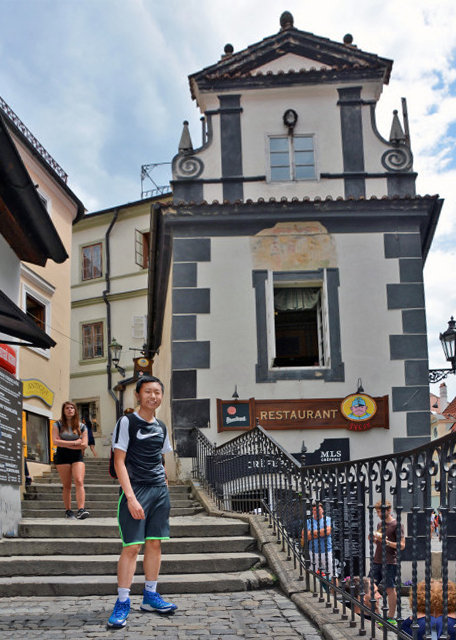
Restaurant Svejk (捷克人餐厅 07-07-2017) 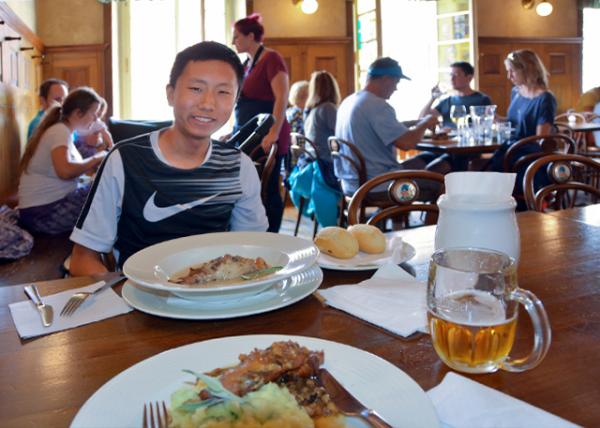
Lunch @ Restaurant Svejk (捷克人餐厅·午餐 07-07-2017) 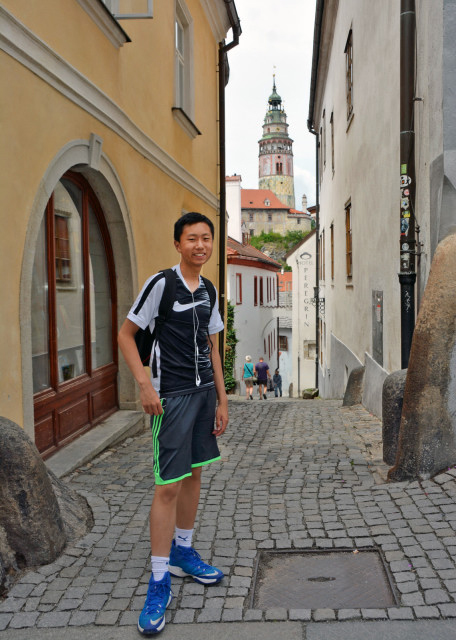
Na Ostrove w/ Castle Tower in the Background (岛路·背景为城堡钟楼 07-07-2017) 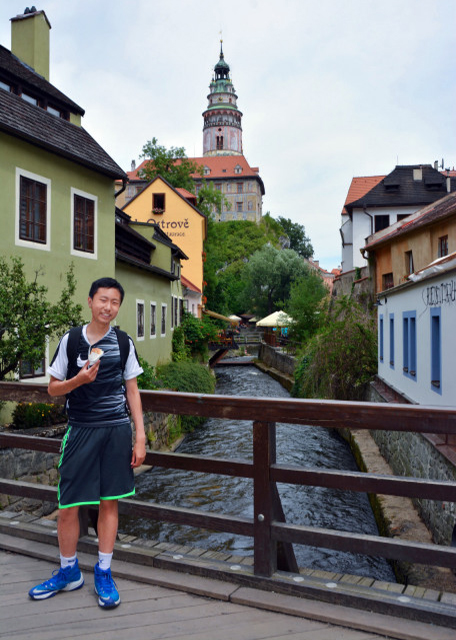
River Polečnice (波兰河 07-07-2017) 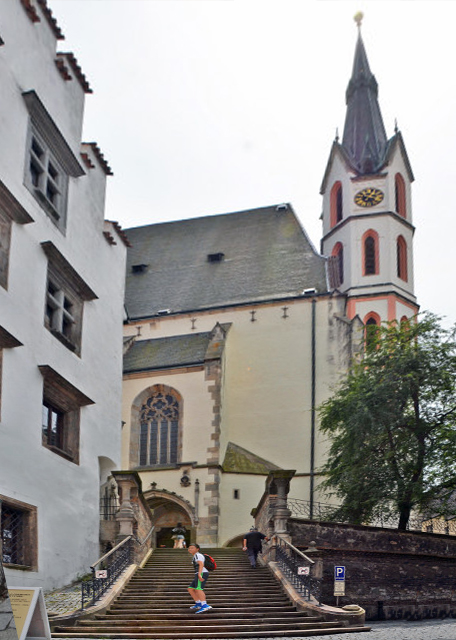
Vitus Church (基督殉道者教堂 07-07-2017) 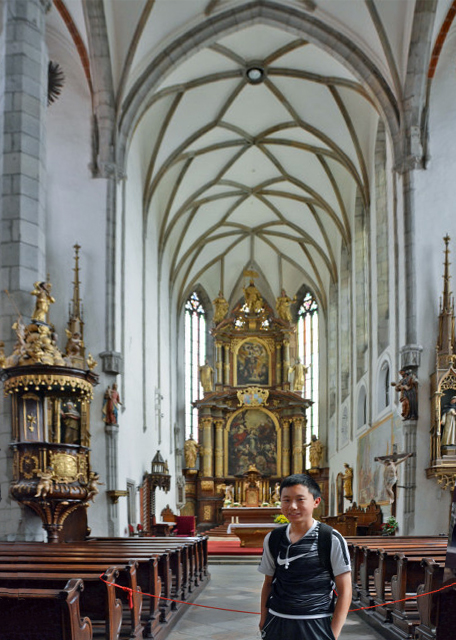
Main Altar of Vitus Church (基督殉道者教堂·主圣坛 07-07-2017) 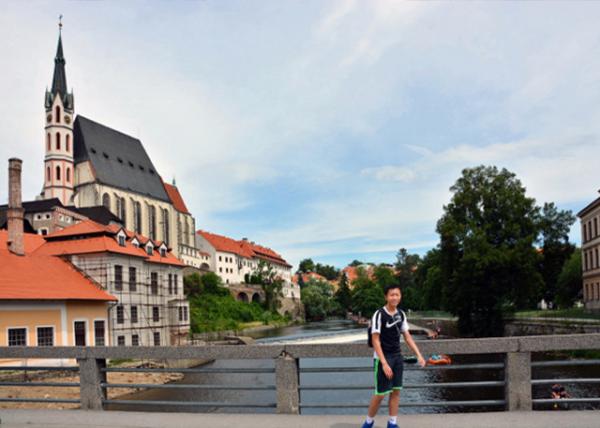
Vltava River (激流河 07-07-2017) 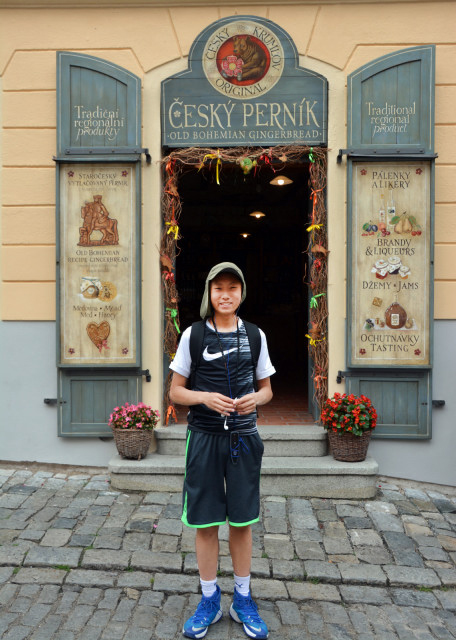
Ceský Perník (捷克姜饼店 07-07-2017) 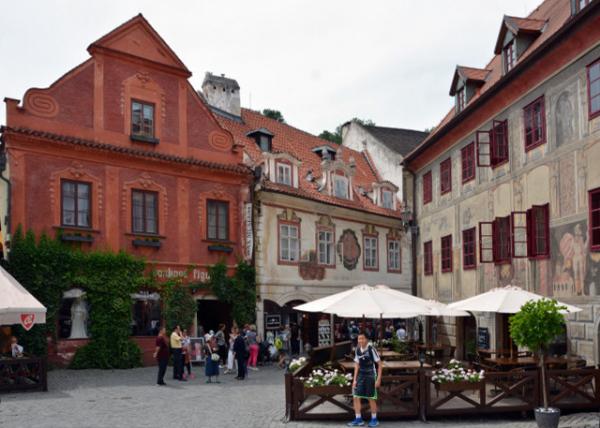 Wax Museum @ Kájovská Wax Museum @ Kájovská
(水坑边庭院街蜡像馆 07-07-2017) Crosslink(相关博文): Czech(出游捷克) Europe(欧洲掠影) 8th Grade(初中三年级) |
